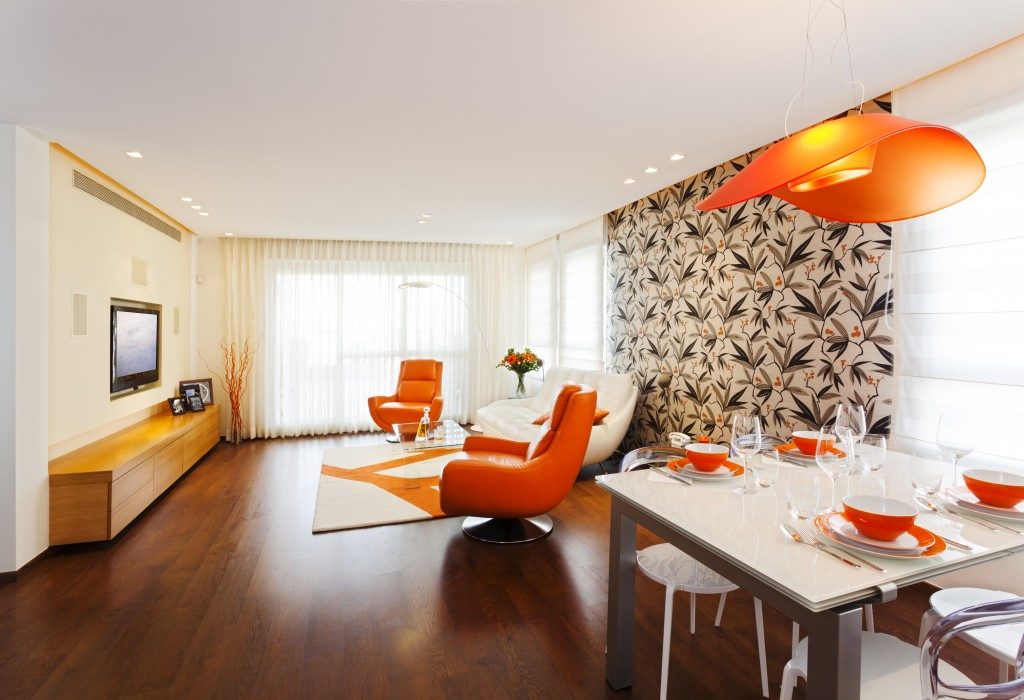Home design goes beyond the aesthetics of a space. It very well influences moods and perceptions, which can equally make or break the feel of your interiors. The only problem is that, a lot of homeowners aren’t too conscious about this. As a result, they get a space that’s nice enough to look at, but not nice enough to be at. Not sure how that happens? Well, here are the ways home design affects moods and perceptions:
Through color schemes
It’s not a secret that colors affect how people feel about their surroundings. Too much red, for instance, can leave people restless. Too little of warm, bright accents can make you sleepy. If you use the right colors — let’s say warm colors, like reds and oranges — in areas of the house where you entertain guests and talk with family members, the hues will get everybody in the zone for good conversations. At the same time, if you use cool colors, like blues and greens, that are supposed to be relaxing, you can facilitate the perfect type of chill, particularly in bedrooms and bathrooms.
Be picky when it comes to deciding on color schemes. You’re supposed to pick not just what looks pretty, but what would align to the atmosphere the room must have. Before you paint your rooms with your favorite colors, make sure to consult color psychology first.
Through the use of space
How you fill up the available space in a room can affect people’s psyche. If you disregard the principle of proportion and put a large sofa in a limited area, you can guarantee that it will feel cramped and claustrophobic. On the other hand, if you allow a lot of floor space go empty and push furniture up against the walls, you would leave a giant vacancy in the middle of the room, which can create a sense of disconnect among the design elements in the room.
Alternatively, there are instances when restricting space is necessary, especially when it’s to create that sense closeness. This is common in areas where you would engage in personal conversations, like informal living and dining rooms. Sometimes, you will also need a vacant middle to create a feeling of expansiveness. You use this often in high-traffic areas, like the foyer and hallways. The bottom line here is that you should be conscious of how your use of space creates certain feels.
Through the lighting
 Lighting is one of those commonly ignored in interior design. But, it’s as important as the furniture and fixtures you introduce in any room. In fact, it merges what colors and use of space do. It can create a gloomy, chilly effect when you use dim lights or make a cheery, bright vibe when you open up your windows and let the natural light come in. At the same time, it can reconfigure the illusion of space.
Lighting is one of those commonly ignored in interior design. But, it’s as important as the furniture and fixtures you introduce in any room. In fact, it merges what colors and use of space do. It can create a gloomy, chilly effect when you use dim lights or make a cheery, bright vibe when you open up your windows and let the natural light come in. At the same time, it can reconfigure the illusion of space.
When you layer lighting, using task, ambient, and accent, you can make the room feel bigger than it is. When you use candle lights, let’s say in bathrooms, you can create a space that feels more intimate. Maximize different types of lighting. Don’t ever neglect natural light. Open up your windows. Dust it off and keep them clear. Call professional window cleaners. Lehi-based designers also recommend using various window treatments, depending on the feel you want to create in your interiors.
Again, your design isn’t just about the pretty look, but the fitting feel as well. So keep in mind how certain elements, namely colors, space, and lighting affect your overall design.




